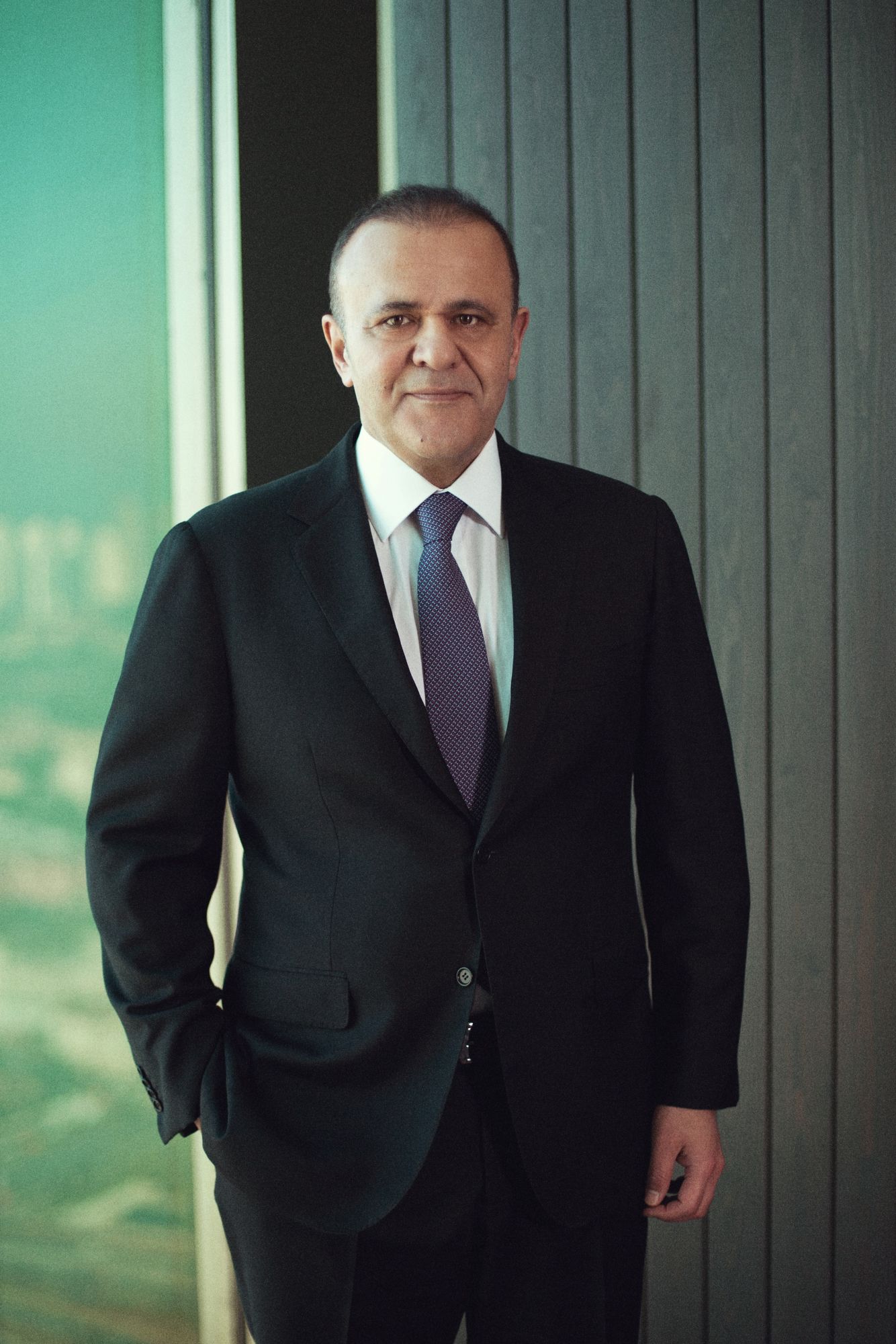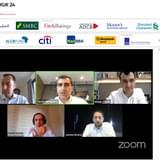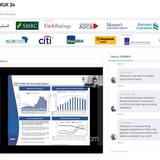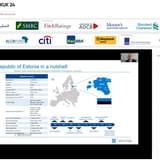What is your outlook on the performance of the Turkish economy at present? How will this develop moving forward?
We believe that Turkey has had a remarkable experience in the last couple of years. Rising global uncertainties and elevated domestic political risks resulted in a tough period for Turkish financial assets in recent years. Nevertheless, Turkey’s growth performance during this period has consistently exceeded expectations considering such uncertainties and risks. Lower oil prices and a rebalancing of growth composition have led to a decline in Turkey’s current account deficit. A solid banking sector, and strong public finances and macroeconomic fundamentals coupled with well thought-out macro prudential measures have had crucial roles in this remarkable performance.
We believe that Turkey will be able to navigate through the short-term risks related to recent political events thanks to its solid macroeconomic fundamentals. After the failed coup attempt, the economy administration has taken decisive action to contain potential adverse effects to the financial system and, as a result, the Turkish banking sector has continued to operate seamlessly.
In addition to the economic measures taken, easing domestic political uncertainties have recently improved the country’s risk premium considerably, and have led the recovery in the financial markets. Therefore, as the country risk premiums normalise to the levels which are consistent with the country’s macroeconomic fundamentals, we expect the adverse impacts of recent developments on the Turkish economy and banking sector to be limited in the near future.
In light of these assumptions, we expect Turkey’s 2016 GDP growth to be realised in line with 2015 growth. While the current account deficit is likely to stay at manageable levels, inflation is still above desired targets. We expect inflation to converge to the Central Bank’s target in the coming years if financial stability persists.
 What is your outlook on the country’s banking sector?
What is your outlook on the country’s banking sector?
Turkey’s 2000–01 banking crisis was a key turning point which led to a massive transformation in the country’s banking sector. As a result, the sector has been heavily recapitalised. This, coupled with successful macroeconomic policies and a strong disinflation period, led to high profitability for the sector for a decade. Thanks to the experience gained from 2001 crisis in addition to stricter regulation and supervision, the banking sector was significantly less affected by the 2008 financial crisis compared to banking sectors in rest of the world.
The improving macroeconomic fundamentals of Turkey have also supported the sector. Sharp disinflation, strong and consistent growth, coupled with increasing incomes and consumer confidence have promoted the sector’s performance. Although the loan to deposit ratio surpassed 100% and reached 120%, banks do not face many problems in rolling over their wholesale funding. This is mainly due to the strong growth prospects and fundamentals of Turkey and its banking sector. Due to low penetration levels there is still room for growth in the sector. Besides favourable demographics, high quality human resources and innovative technological infrastructure bode well for prospective growth of the Turkish banking sector.
How could liquidity in the banking sector change going forward?
Even in the first business day after the failed coup attempt we have not witnessed any liquidity problems in the market and therefore the emergency liquidity provided by the Central Bank was left untapped. Of course, the economy administration’s swift and decisive actions have been crucial, but we also have to appreciate that Turkish banks are fairly liquid and there is confidence in Turkish FIs both on the side of the domestic and foreign creditors of the banking system. This is due to strict regulations as well as banks’ own prudential liquidity management strategies. Thanks to their solid fundamentals, Turkish banks can easily access global markets. Therefore, we do not anticipate any liquidity problems going forward.
How widespread are NPLs across the sector? How much of a concern is this?
Despite considerable TRL depreciation over the last couple of years, the Turkish banking sector’s asset quality has remained intact and the deterioration in NPL ratios has been very limited. Even though we have observed an increase in the NPL ratio since the beginning of 2016, we think the levels are low and far from alarming compared to many developed and emerging market banking systems. Given the sector’s strong financial metrics and macroeconomic resilience, we think a big jump in the number of NPLs in the sector is highly unlikely unless the Turkish economy and/or the global economy enters a sharp recession going forward. We think this is a low probability event at the moment, particularly in the case of Turkey.
How has Odeabank’s overall strategy adjusted with the changing economic environment in and around Turkey?
Odeabank started operations at the end of 2012 and climbed the rankings quickly to become 9th largest lender among Turkey’s private banks in terms of total loans and total assets within just 3 years. That being said, the economic environment and financial conditions in Turkey have been very volatile and challenging since Odeabank’s inception, compared to the preceding decade. Despite some headwinds, Odeabank has maintained its competitive position in the sector thanks to the strong support of shareholders, innovative and flexible structures, efficient technological infrastructure, effective risk management principles, experienced and success-oriented human resources and customer-focused service approach.
In challenging times like this and in a highly competitive banking sector like Turkey’s, efficiency becomes a differentiating factor. Odeabank’s loans and deposits per branch and per employee are noticeably higher compared to its peers. Similarly, it has relatively low OPEX to loans and OPEX to deposits ratios. Efficiency lies at the hearth of our operating model and our strategy and will continue to be geared towards this.
How have lending operations at Odeabank changed over the past year? How much of a role will the bank play in the markets in 2017?
We target all sectors and regions in Turkey, serving 95% of the economy geographically (currently 88%) in all pillars of banking (corporate, commercial, SME/micro, retail). We focus primarily on our customers in every business move we make; we identify their needs with a holistic approach and become their solution partner. I think what differentiates us from peer competitor banks on the lending side is our swift and timely delivery. We work with each client to customise their solutions; convince them that “if it cannot be done at Odeabank, it just cannot be done,” and establish trust. In addition, we act as a mediator in trade finance, particularly with the Middle East and North Africa region; and aspire to be the leading Turkish bank for the broader region. Odeabank will continue to be a challenger bank for its peer group. By sticking to our highly efficient operating model and by gaining more ground in Retail and SME segments we will continue to create value for our stakeholders over the next year.
How are the Bank’s funding requirements likely to change in the near future?
As the national savings rate has been low, the banking sector has to fund its high growth rate via external financing. Thus, dependence of external financing of the sector increased dramatically before macro-prudential measures took effect in 2014. Since then, the share of external funding in banking sector total liabilities has stabilised. Meanwhile, the maturity of banking sector foreign borrowing has extended thanks to the CBRT’s regulations that encourage long-term instead of short-term borrowing. Therefore, although the dependence of external financing is and will likely be high in the sector, macro-prudential measures and the maturity extension have strengthened the sector’s resilience against global shocks.
We expect the dependency of Turkish banks’ foreign borrowings to decline in the long-term thanks to the potential benefits of structural reforms aimed at increasing gross national savings. That said, Odeabank has a self-funded balance sheet and has one of the lowest loan to deposit ratios in the sector. We have a fairly liquid balance sheet and we are less dependent on external/wholesale funding, unlike the rest of the sector.
What factors, either internal or external could impact both lending and borrowing operations at the Bank?
We think global factors will be more dominant than domestic factors in the coming period in terms of their impact on financial conditions. Due to ongoing fragility in global financial system stemming from negative interest rates in the Eurozone and Japan, Chinese growth concerns and elevated geopolitical risks, the sector preferred to be rather conservative in terms of growth so far this year. Meanwhile, prospective rate hikes from the US Federal Reserve (Fed) may increase the funding costs of the sector in the coming months.
How does Odeabank look to raise capital? When are the most opportune times to tap the markets?
As a young and dynamic bank, Odeabank is ambitious to grow further. Odeabank closed the first half of 2016 taking its place among the most successful players in the industry, ranking 8th among private deposit banks in terms of deposits and 9th in terms of total assets. Consequently, Odeabank has received interest from global investors. The EBRD, IFC and IFC Financial Institutions Growth Fund along with other prominent investors from the Middle East have become shareholders of Odeabank through a TRL1bn capital increase. This capital increase has provided Odeabank with additional financial flexibility, which will allow it to expand its financing options in the real sector in Turkey, fund large scale infrastructure projects and increase access to finance for SMEs.
In which sectors of the Turkish economy are you seeing the most opportunities for lending?
Excluding cyclical volatilities, all main sectors such as production, construction, service, energy, agriculture and so on have demonstrated growth patterns over the last 10 years. We believe that companies with solid business ethics and a sensible business and operating plan should be supported. With this understanding, we try to deepen our relationship with those companies we regard as promising regardless of their sector. Additionally, SMEs are key players in the Turkish economy and we believe that the contribution of SMEs to the Turkish economy will continue to increase. Therefore, SMEs will continue to be a key part of our strategy, not only in lending but with all banking requirements.
How has Odeabank adapted to Basel III capital requirements?
The three main components of Basel III are capital, stress test and liquidity risk. I believe that the indicators such as the Liquidity Coverage Ratio (LCR) brought by Basel III for short-term liquidity and Net Stable Funding Ratio (NSFR) for long-term liquidity have introduced a new perspective to liquidity risk for global banking sector.
When it comes to Odeabank, we have closely followed up QIS works since 2013, upon the release of related practices and regulations by Basel, and initiated necessary technological infrastructure engagements for adaptation. We even began the integration works pertaining to NSFR, which is actually planned to be reported and followed up in 2018.
Besides the developments on Basel III, we closely review, follow-up and adopt the Best Practice Guidelines and regulations related to adoption of Basel III published by Banking Regulation and Supervision Agency of Turkey (BRSA). As of March 2016, the bank is fully compliant with the Basel rules as part of RCAP while measurements and calculations are also made within the framework of these rules. Moreover, Odeabank maintains the infrastructure works to make capital adequacy calculations as per an internal rating based (IRB) approach under Basel rules.
Structural changes and modelling engagements to develop the measurement methodologies stipulated by this approach continue. Therefore, while there is still a room for improvement we are comfortable with meeting Basel III requirements.









